
Inverse Trigonometric Function Formulas
Inverse Trigonometric Functions are important topic in Trigonometry. Here is detailed list of Inverse Trigonometric Function Formulas
Domain and Range Of Inverse Trigonometric Functions
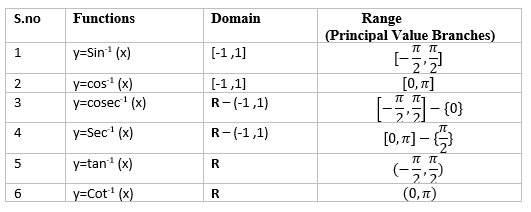
The value of an inverse trigonometric functions which lies in its principal value branch is called the principal value of that inverse trigonometric functions
Graph of Inverse Trigonometric Functions
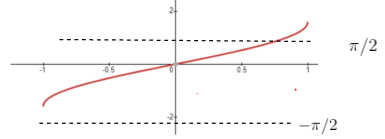
$sin^{-1} x$
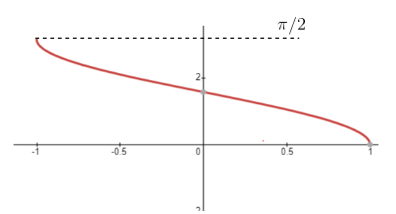
$cos^{-1} x$
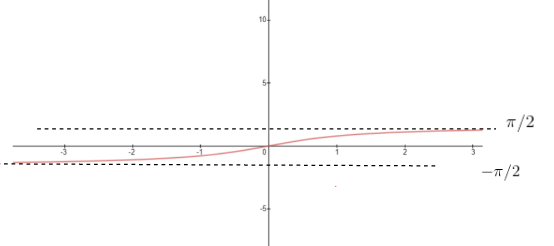
$tan^{-1} x$
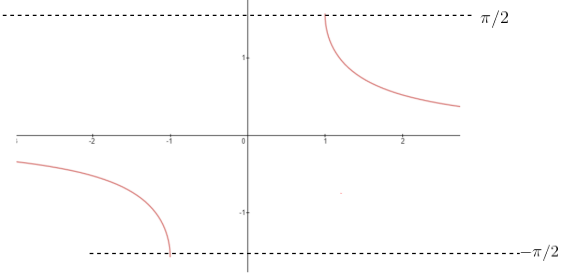
$cosec^{-1} x$
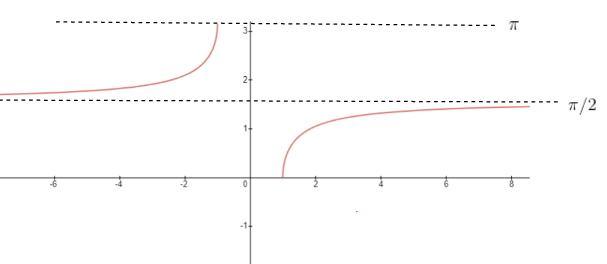
$ sec^{-1} x$
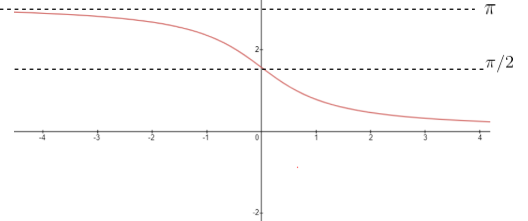
$cot^{-1} x$
More Formulas
$sin (sin^{-1} x) = x$ and $sin^{-1} (sin \theta) = \theta$, if $- \frac {\pi}{2} \leq \theta \leq \frac {\pi}{2}$ and $- 1 \leq x \leq 1$.
$cos (cos^{-1} x) = x$ and $cos^{-1} (cos \theta) = \theta $, if $0 \leq \theta \leq \pi$ and $- 1 \leq x \leq 1$
$tan (tan^{-1} x) = x$ and $tan^{-1} (tan \theta) = \theta $ if $- \frac {\pi}{2} \leq \theta \leq \frac {\pi}{2}$ and $ – \infty < x < \infty$.
$cosec (cosec^{-1} x) = x$ and $cosec^{-1} (cosec \theta) = \theta$ if $- \frac {\pi}{2} \leq \theta < 0$ , $ 0 < \theta \leq \frac {\pi}{2}$ and $- \infty < x \leq -1$ or $1 \leq x < \infty$ .
$sec (sec^{-1} x) = x$ and $sec^{-1} (sec \theta) = \theta$ if $0 \leq \theta < \frac {\pi}{2}$ or $\frac {\pi}{2} < \theta \leq \pi $ and $- \infty < x \leq -1$ or $1 \leq x < \infty$.
$cot (cot^{-1} x) = x$ and $cot^{-1} (cot \theta) = \theta$, if $0 < \theta < \pi$ and $ – \infty < x < \infty$
Inverse of Negative x
$sin^{-1} (-x) = -sin^{-1} (x)$
$cos^{-1} (-x) = \pi – cos^{-1} (x)$
$tan^{-1} (-x) = -tan^{-1} (x)$
$sec^{-1} (-x) = \pi – sec^{-1} (x)$
$cosec^{-1} (-x) = -cosec^{-1} (x)$
$cot^{-1} (-x) = \pi – cot^{-1} (x)$
Other Integration Related Articles
Other Formulas
$sin^{-1} (\frac {1}{x}) = cosec^{-1} (x)$
$cos^{-1} (\frac {1}{x}) = sec^{-1} (x)$
$tan^{-1} (\frac {1}{x}) = cot^{-1} (x)$
$sin^{-1} (x) + cos^ {-1} (x) = \frac {\pi}{2}$
$sec^{-1} (x) + cosec^ {-1} (x) = \frac {\pi}{2}$
$tan^{-1} (x) + cot^ {-1} (x) = \frac {\pi}{2}$
$sin^{-1} (x) + sin^ {-1} (y) = sin ^{-1} (x \sqrt {1-y^2} + y \sqrt {1-x^2})$ if $x,y \geq 0 $, $x^2 + y^2 \leq 1$
$sin^{-1} (x) + sin^ {-1} (y) = \pi – sin ^{-1} (x \sqrt {1-y^2} + y \sqrt {1-x^2})$ if $x,y \geq 0 $, $x^2 + y^2 > 1$
$sin^{-1} (x) – sin^ {-1} (y) = sin ^{-1} (x \sqrt {1-y^2} – y \sqrt {1-x^2)}$ if $x,y \geq 0 $, $x^2 + y^2 \leq 1$
$sin^{-1} (x) – sin^ {-1} (y) = \pi – sin ^{-1} (x \sqrt {1-y^2} – y \sqrt {1-x^2})$ if $x,y \geq 0 $, $x^2 + y^2 > 1$
$cos^{-1} (x) + cos^ {-1} (y) = cos ^{-1} (x y – \sqrt {1-y^2} \sqrt {1-x^2})$ if $x,y \geq 0 $, $x^2 + y^2 \leq 1$
$cos^{-1} (x) + cos^ {-1} (y) = \pi – cos ^{-1} ((x y – \sqrt {1-y^2} \sqrt {1-x^2})$ if $x,y \geq 0 $, $x^2 + y^2 > 1$
$cos^{-1} (x) – cos^ {-1} (y) = cos ^{-1} (x y + \sqrt {1-y^2} \sqrt {1-x^2})$ if $x,y \geq 0 $, $x^2 + y^2 \leq 1$
$cos^{-1} (x) – cos^ {-1} (y) = \pi – cos ^{-1} (x y + \sqrt {1-y^2} \sqrt {1-x^2})$ if $x,y \geq 0 $, $x^2 + y^2 > 1$
$tan^{-1} (x) + tan^ {-1} (y)= tan^{-1} (\frac {x+y}{1-xy})$ , if $x,y > 0 $, $xy < 1$
$tan^{-1} (x) + tan^ {-1} (y)= \pi + tan^{-1} (\frac {x+y}{1-xy})$ , if $x,y > 0 $, $xy > 1$
$tan^{-1} (x) + tan^ {-1} (y)= tan^{-1} (\frac {x+y}{1-xy}) – \pi$ , if $x < 0, y > 0 $, $xy > 1$
$tan^{-1} (x) – tan^ {-1} (y)= tan^{-1} (\frac {x-y}{1+xy}) – \pi$ , if $xy > -1$
$tan^{-1} (x) + tan^ {-1} (y) + tan^ {-1} (z) = tan^{-1} (\frac {x+y+z – xyz}{1-xy-yz-xz})$
$ 2 sin^{-1} (x) = sin^{-1} (2x \sqrt {1-x^2})$ if $ -\frac {1}{\sqrt {2}} \leq x \frac {1}{\sqrt {2}} $
$ 2 cos^{-1} (x) = cos^{-1} (2x^2 -1)$
$2 tan^{-1} (x) = tan^{-1} (\frac {2x}{1-x^2})$ if $ -1 <x < 1$
$2 tan^{-1} (x) = sin^{-1} (\frac {2x}{1+x^2})$ if $ |x| \leq 1$
$2 tan^{-1} (x) = cos^{-1} (\frac {1 -x^2}{1+x^2})$ if $ x \geq 0$
$3 sin^{-1} (x) = sin^{-1} (3x -4x^3)$
$3 cos^{-1} (x) = cos^{-1} (4x^3 – 3x)$
$3 tan^{-1} (x) = tan^{-1} (\frac {3x -x^3}{1-3x^2})$
Inverse trigonometric functions are very useful in a wide range of applications. Understanding these functions is crucial for solving problems in mathematics, physics, and engineering. By mastering the properties and identities of inverse trigonometric functions, you can gain a deeper understanding of trigonometry and its applications.
Related Articles
Trigonometry Formulas for class 11 (PDF download)
sin cos tan table
Integration Formulas
sin 18 degrees
tan 15 degrees
Differentiation formulas
https://en.wikipedia.org/wiki/Differentiation
This article is amazing. You cover all the formulas which helps me to solve the equations in lesser time. You can also do that by using the trigonomatry graphing calculator.